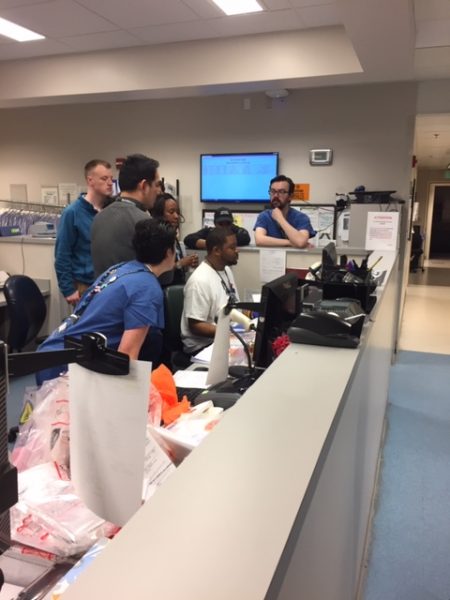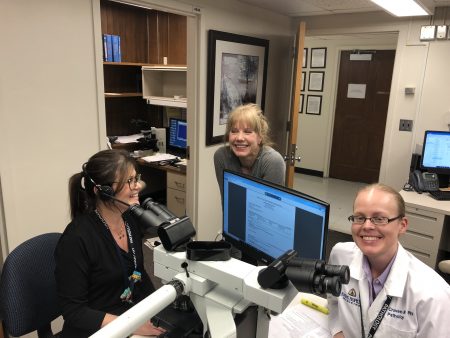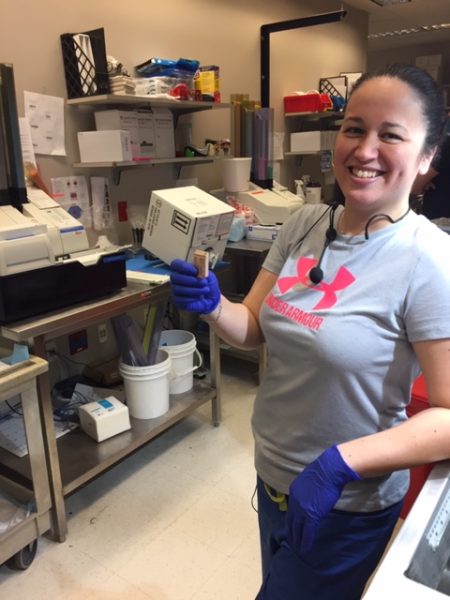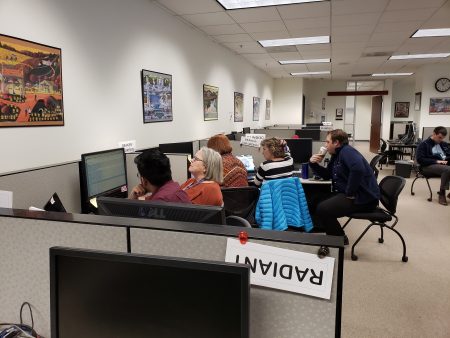In the wee hours of Sunday, February 10, 2019, the Epic Beaker Anatomic Pathology Laboratory Module went live at the Johns Hopkins Hospital, Howard County General Hospital, and the Johns Hopkins Bayview Medical Center. Epic Beaker has officially replaced the long-lived Pathology Data System (PDS) Laboratory Information System in use at Johns Hopkins since 1984!

Johns Hopkins Pathology is Epic’s first customer that did a full-scale Pathology case conversion. You will find the same question posed in even a cursory review of the Epic User Web Forum for the Beaker Module: How are you converting cases from your legacy system to Beaker? In the past, that answer involved a disappointing workflow requiring each legacy case to be reaccessioned into Beaker, conveying a new Beaker case number to the case, and relabeling all assets of that case. That was the past and we are the future!

We successfully converted over 4,200,000 cases dating back to the first use of a laboratory information system at the Johns Hopkins Hospital. At a fundamental level, this means that all legacy cases keep their legacy case numbers, and all recut requests, amendments, and addendums can be performed and resulted in Beaker. Discrete legacy data is available to be pulled into analytics so that when a search spans data from PDS and Beaker, there is no need to break up the search among two systems. This allows our Lab managers, CQI, and pathologists to use the latest tools available in Beaker to perform analytics, including Epic’s SlicerDicer reporting tool with the newly released lab results and tests data model. This powerful new reporting tool allows for the parsing of large subsets of data in seconds.

This was a multi-year process with collaboration of multiple teams across the Department of Pathology and the Department of Information Technology. Working closely with the Beaker developers at Epic, we created the structure to receive and store data in the Beaker module. This process involved multiple steps. First, we had to create and order in Epic, then lay a result report in that order. After the results were posted to Epic, we ran the case content, and this included the discrete slide, block and specimens that belonged to that case. The final step involved running a utility within Epic to convert the case into a Beaker case, or what we affectionately started calling “Beakerizing the case.”

Given the scale and complexity of the data, we practiced the conversion in our nonproduction environments for nearly a year. Each step in the conversion process needed to be carefully coordinated and validated. All errors needed to be investigated and corrected. Pathology IT analysts needed to extract the data from PDS and process the data into a format that Epic could utilize across our interface. Epic bridges analysts had to start up new interfaces from PDS to Epic. The HDMI team configured the interface engine to incorporate PDS data into the exact format that Epic requires, and the Epic Beaker application analysts built the environment so that the data could be stored, viewed, and manipulated by end-users.

We practiced these steps repeatedly over many months. Each time we learned valuable lessons and we incorporated those lessons into our next practice. There were many complicating factors that needed to be worked through. One complicating factor was that when the Ambulatory module first went live at JHM in 2013, ten years of result reports were transferred into Epic, and since then PDS results have been interfaced into Epic. As part of this conversion, we decided to re-lay all results because it would have been too complicated and risky to try to select which of the more than 4,200,000 cases already have result reports in Epic. We had to do this in such a way that we were overlaying final results over final results, so that it would not appear to a provider in chart review that the patient had two separate cases when there was only one. In a multi-week process, we enlisted a cadre of physicians, pathologists, and lab staff to go into the nonproduction environment and validate our testing by reviewing result reports for format errors and validate that the clinical content had not changed.
After perfecting the conversion process, we began converting the data into Epic in January 2019. Orders and results were completed prior to the Beaker go-live. At Beaker go-live, we began running in the case content and “Beakerizing the cases.” Given the volume of the data needed to be converted we did this in batches. We are very happy we have completed conversion of ALL cases from 1984 through 2018.
Thanks to all of our clinical users who were involved in this massive project.